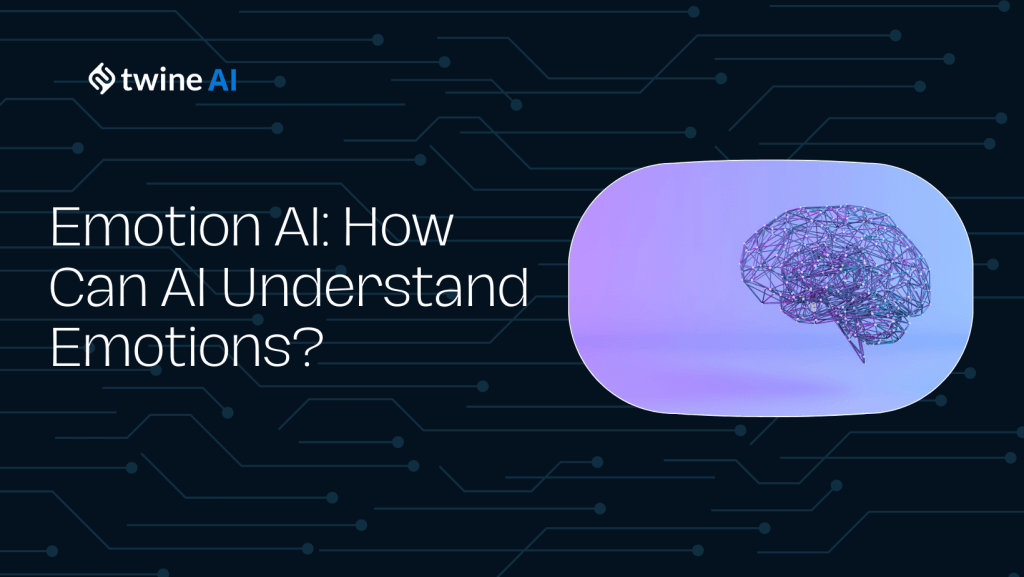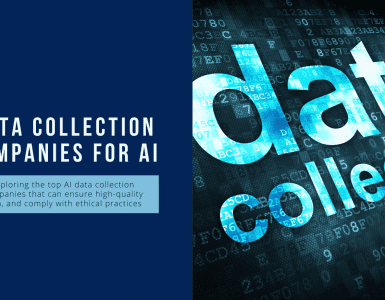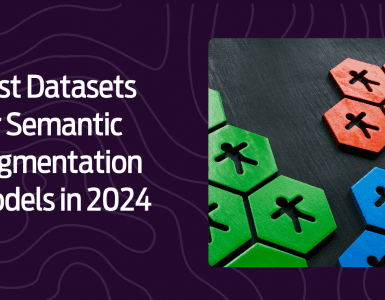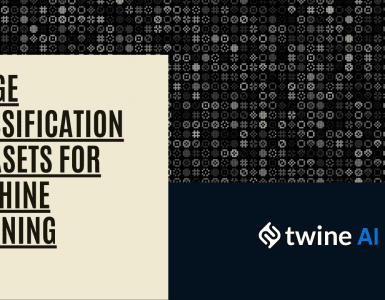
Artificial Intelligence and Emotion Recognition: An Unlikely Pair
When John McCarthy and Marvin Minsky founded Artificial Intelligence in 1956, they were surprised by how quickly a machine could solve puzzles that were extremely challenging for people.
It turns out that logical tasks like chess are quite easy for an AI, however, the real challenge lies in training the AI to understand and replicate emotions.
“We have now accepted after 60 years of AI that the things we originally thought were easy, are actually very hard and what we thought was hard, like playing chess, is very easy” -Alan Winfield, Professor of robotics at UWE, Bristol,
Social and emotional intelligence comes naturally to humans. We instinctively interpret feelings and react accordingly. This fundamental level of Intelligence, which we have acquired over time through different life experiences, guides us in how to behave in different scenarios. So, can this automatic understanding be taught to a machine? Let’s dive in
Emotional Intelligence in AI
Despite what the name might lead you to believe, Emotion AI does not refer to a sad computer that has had a bad week. Emotional intelligence in AI is a concept that mirrors human emotional understanding. It encompasses the ability of AI systems to perceive, interpret, and respond to human emotions in a natural and empathetic manner.
Since 1995, the field of artificial intelligence known as “Emotion AI,” also referred to as “Affective Computing,” has sought to interpret, comprehend, and even reproduce human emotions.
The Importance of Recognising Emotions
Emotion recognition is vital in AI applications like human-computer interaction, customer service, mental health support, etc. It empowers AI to enhance user experiences, offer tailored responses, and even provide mental health insights. Giving machines emotional intelligence has long been an ambitious goal for artificial intelligence researchers. Teaching AI to recognise and understand emotions could profoundly impact how systems interact with and relate to humans across many domains.
Why Emotion Recognition Matters
Emotion recognition allows AI systems to better comprehend the sentiment behind human speech and actions. Today’s natural language processing still struggles with sarcasm, irony and tonal nuances. By studying emotional cues, AI can infer moods and feelings to have more natural conversations. Emotionally intelligent AI can respond more empathetically, providing comfort when sadness is detected. In roles like medical diagnosis or elderly care, emotional skills help AI be more supportive and humane.
The Challenges in Emotion Recognition
Emotions are a complex web of nuances, with facial expressions, vocal tone, and context all playing crucial roles. Teaching AI to grasp these subtleties presents a difficult challenge. AI’s journey to emotional intelligence is complicated by the wide spectrum of human emotions, cultural variations, and the need to adapt to real-time scenarios.
The Power of Audio-Visual Data
Emotion AI dates back to 1995, but progress has accelerated in recent years. Affectiva, a Boston-based emotion AI firm with a focus on advertising research and automotive AI, was launched in 2009 by Picard and Rana el Kaliouby. With the user’s consent, Affectiva’s technology captured the viewer’s reactions to an advertisement. They can fully understand a person’s mood by using “Multimodal emotion AI”, which examines facial expression, conversation, and body language.
Their diversified test datasets of 6 million faces from 87 different nations were used to train deep learning algorithms, contributing to their 90% accuracy scores. The AI learns from this diverse dataset, understanding the correlation between body language and speech patterns and the corresponding emotions and thoughts.
Much like humans, machines excel at extracting insights into our emotions from video and speech data rather than just text.
How Audio and Video Data Fuel AI
Audio and video datasets are the building blocks of AI’s emotional understanding. They provide rich sources of information that AI can utilise to decode emotions accurately.
The Power of Audio Data
When we think of audio data, we’re talking about sound – speech, music, or any other auditory input. But beyond the mere auditory signals, audio data is a window to the emotional states of individuals. The way someone speaks, their tonality, pace, and pauses are all indicators of their emotional state. To advance AI’s emotional intelligence, researchers are leveraging rich audio datasets. Vocal inflections provide insights into unspoken feelings. Laughter indicates joy, yelling conveys anger, and sighs reflect sadness. By correlating vocal patterns with emotions, machine learning models can categorise sentiments from voice data. This adds an affective dimension missing from text-based analysis.
Twine AI can help you with our huge list of Open source audio datasets.
Visual Data: The Facial Clues
Facial expressions are a visual roadmap to emotions, with micro-expressions, eye movements, and gestures all providing crucial clues. AI can analyse unseen micro-expressions, the smallest eye movements, and muscle movements in the face to gain insight into a person’s feelings. Visual datasets further augment emotion recognition. Facial expressions like smiles and frowns help convey inner states. Body language and gestures also give clues, from slumped shoulders to impatient tapping.
Combined with audio cues, video provides additional contextual signals. Together they can identify nuanced emotions that either modality might miss independently.
Twine AI has collected dozens of Open source video datasets which you can find here.
Deep Learning Classifiers
To process these multidimensional datasets, researchers employ deep neural networks. By finding correlations between audiovisual cues and emotions, deep-learning models categorise emotions with increasing accuracy. These classifiers integrate face, voice and body language patterns to assemble holistic emotional profiles. This data synthesis aims to mimic the human ability to interpret sentiments.
The Collaboration of Audio and Vision Datasets
The integration of audio and visual data provides a comprehensive picture of emotional states, making it possible for AI to grasp emotions in a holistic manner.
- Synergy of Audio and Video Data: The collaborative power of audio and visual data enables AI to cross-reference information, enhancing the accuracy and reliability of emotion recognition.
- Enhancing Accuracy and Reliability: Through machine learning algorithms, AI can learn to refine its emotional recognition by continuously improving its ability to process audio and visual data.
The Data Behind Emotion Recognition
- Building Emotion Datasets: Creating emotion datasets is a critical step as it serves as training grounds for AI models. To accurately categorise emotions, machine learning algorithms need large, diverse training emotion datasets that exemplify the complexities of human feeling. Multi-modal datasets combine audio, visual, and text data to provide a rich emotional landscape.
Twine AI boasts specialised expertise in creating tailored audio and video datasets to train the emotional intelligence capabilities of our customers’ AI models.
- Creating a Diverse Training Set: Diversity within the dataset is essential to ensure that AI recognizes emotions across various demographics, avoiding biases and enhancing inclusivity. The datasets must represent diversity in age, gender, ethnicity, culture, and language to minimise bias.
At Twine AI, we leverage our network of over 500,000 freelance contributors from more than 190 countries to curate maximally diverse datasets at scale. By sourcing emotional speech, facial expressions, and textual data from our vast global talent pool, we capture the nuances of sentiment across cultures.
- The Ethical Considerations: While vital for emotion AI, creating datasets raises important ethical questions around privacy, consent, and data security that cannot be overlooked.
We prioritise ethics in constructing emotion datasets at Twine AI. We obtain explicit consent from all contributors of audio, video, and text samples. For transparency, we provide clear terms of use. Through ethical practices around consent, privacy, and responsible use, we produce conscientious datasets that uphold both human well-being and AI progress.
- Annotating Data for AI Learning: Labeling data is a rigorous process that involves annotating emotional states, which can be done by humans or automated systems. Our team of data experts carefully labels samples like voice recordings and facial images, providing a nuanced human assessment of expressed emotions.
- Human Labeling vs. Automation: A blend of manual human annotation and automated labeling tends to yield the best results. Humans provide nuanced emotional assessments AI cannot yet match. But reviewing hours of footage is taxing. Automated tools annotated using predicted algorithms offer efficiency but lack human-level contextual understanding. Carefully designed human-AI collaboration maximises annotation quality on expansive datasets.
- Quality and Consistency Matters: No matter the annotation techniques, the quality and consistency of labeled data significantly impact the precision of AI’s emotion recognition capabilities. Insufficiently detailed tags or conflicting labels on similar samples degrade model training.
Twine AI sets rigorous standards for annotation quality and consistency. Our annotators are highly trained and we follow a quality assurance process to ensure uniform labeling of the data.
AI Models and Emotion Recognition
AI models that excel in emotion recognition leverage neural networks, specifically convolutional neural networks (CNN) and recurrent neural networks (RNN).
- Convolutional Neural Networks (CNN): CNNs excel in analysing visual data, making them an integral part of understanding facial expressions and gestures. NVIDIA utilizes CNN trained on large datasets of facial images to power its Morpheus AI platform to analyze subtle facial expressions and micro-gestures in video streams to infer emotional states and engagement levels, with applications in sectors like automotive, healthcare, and advertising.
- Recurrent Neural Networks (RNN): RNNs specialise in processing sequences, such as speech patterns and intonation, making them ideal for audio data analysis. Amazon’s Alexa leverages RNNs to interpret speech patterns, intonation, and emotional cues to enhance conversational interactions.
- Deep Learning for Emotion Recognition: Deep learning techniques like Long Short-Term Memory (LSTM) and Gated Recurrent Unit (GRU) provide AI with the ability to decode emotional nuances hidden within time sequences. Microsoft’s Seeing AI app uses deep learning like LSTM networks to recognize emotions from tone of voice, amplifying expression for visually impaired users.
- The Power of Transformer Models: Transformer models, known for their ability to capture contextual relationships, are pushing the boundaries of AI emotion recognition to new heights. Huawei developed StorySign, an app powered by transformer networks that can translate children’s books into sign language and recognize emotional engagement to aid deaf literacy.
Real-World Applications
- Enhancing User Experience: Emotion recognition enhances user experiences. In streaming platforms can analyse viewers’ emotional responses to content and make recommendations based on their preferences. For example, if a viewer enjoys suspenseful movies, the system can suggest similar films that match their emotional reactions. In the realm of e-commerce, understanding user emotions can lead to personalised shopping experiences. Websites and apps can adapt their interfaces, product recommendations, and marketing strategies to match the user’s current emotional state, increasing the chances of successful conversions.
- Healthcare and Mental Health: AI plays a crucial role in mental health by detecting emotional states. It can analyse speech patterns, facial expressions, and physiological indicators to identify signs of distress or mental health conditions. Early warning systems can notify healthcare professionals or individuals themselves when emotional distress is detected, allowing for timely intervention and support.
- Entertainment and Gaming: Personalised content recommendations and immersive experiences are made possible through AI’s ability to recognize user emotions.
Personalised Content: In the entertainment industry, AI-driven platforms use emotion recognition to provide tailored content recommendations. For gamers, this means suggesting games that match their emotional preferences. For music and movie streaming services, it translates to curating playlists or film selections that resonate with the user’s current emotional state, whether they want to relax or get energised.
Enhancing Immersion: In the gaming industry, AI brings deeper immersion by adapting game dynamics to players’ emotional reactions. Enhancing Immersion: In the gaming world, AI can adapt the dynamics of a game based on the player’s emotional reactions. For instance, if a player appears bored or unengaged, the game can introduce new challenges or elements to maintain their interest. This adaptive approach enhances immersion and keeps players actively engaged.
- Emotion Recognition in Customer Service: AI-powered chatbots and virtual assistants are enhancing user interactions by adapting their responses to users’ emotions. For instance, if a customer is frustrated, the chatbot can respond with empathy and offer solutions, creating a more satisfying customer service experience.
The Future of Emotion AI
The road to giving AI emotional intelligence is difficult, but it will be transformative. The integration of audio and visual data will power emotion AI, which has enormous potential. Companies will capitalise on this, as there will be a financial incentive to do so in many industries. This will further the innovation in the space.
Recognising emotions is not only a technological achievement but also a human-centric endeavour. It empowers AI to enhance user experiences, support mental health, and provide empathetic responses in various sectors. However, challenges persist, from the complexity of emotions to ethical considerations in creating emotion datasets.
As we navigate this frontier, we must balance innovation with ethics, recognising that the true evolution of AI’s emotional intelligence lies in its harmonious integration with human understanding and well-being. There is a chance that emotion AI can create negative societal consequences, as we’ve seen with recommendation algorithms, but if we put ethics at the forefront of the tech, it will make the world a better place.








